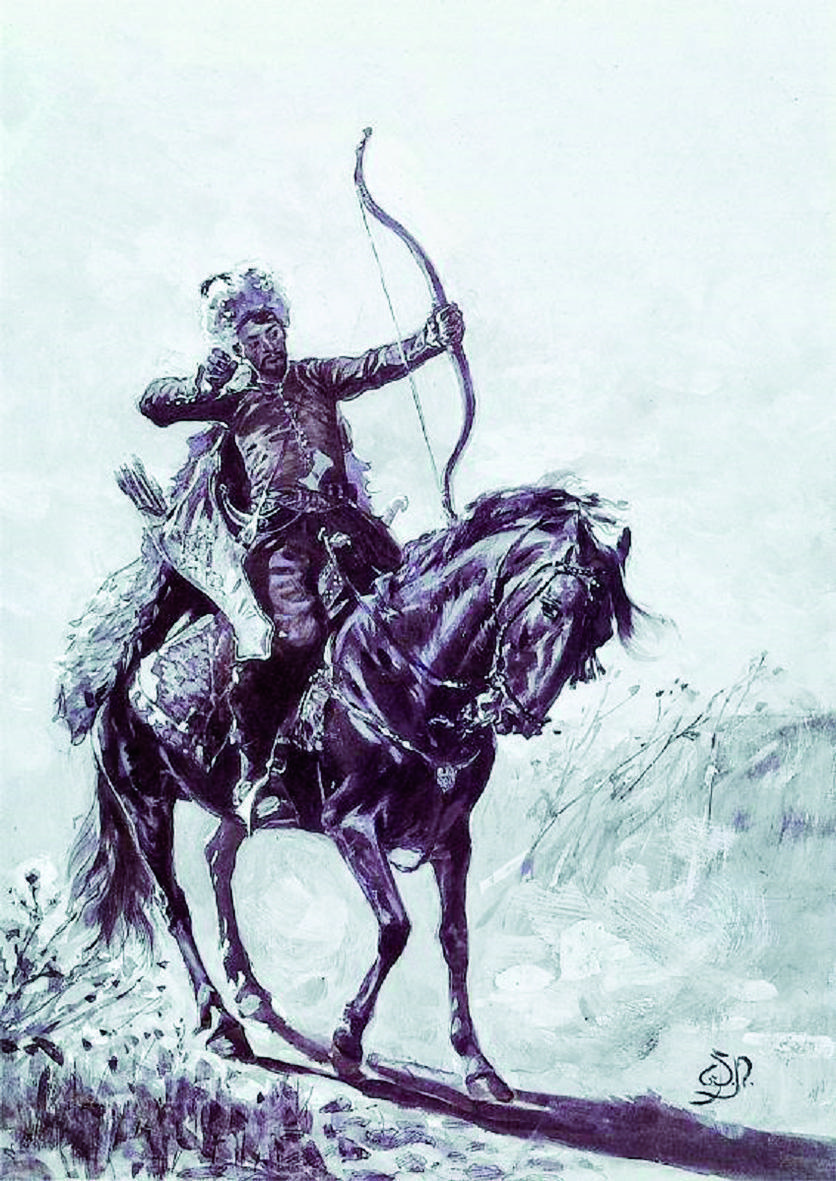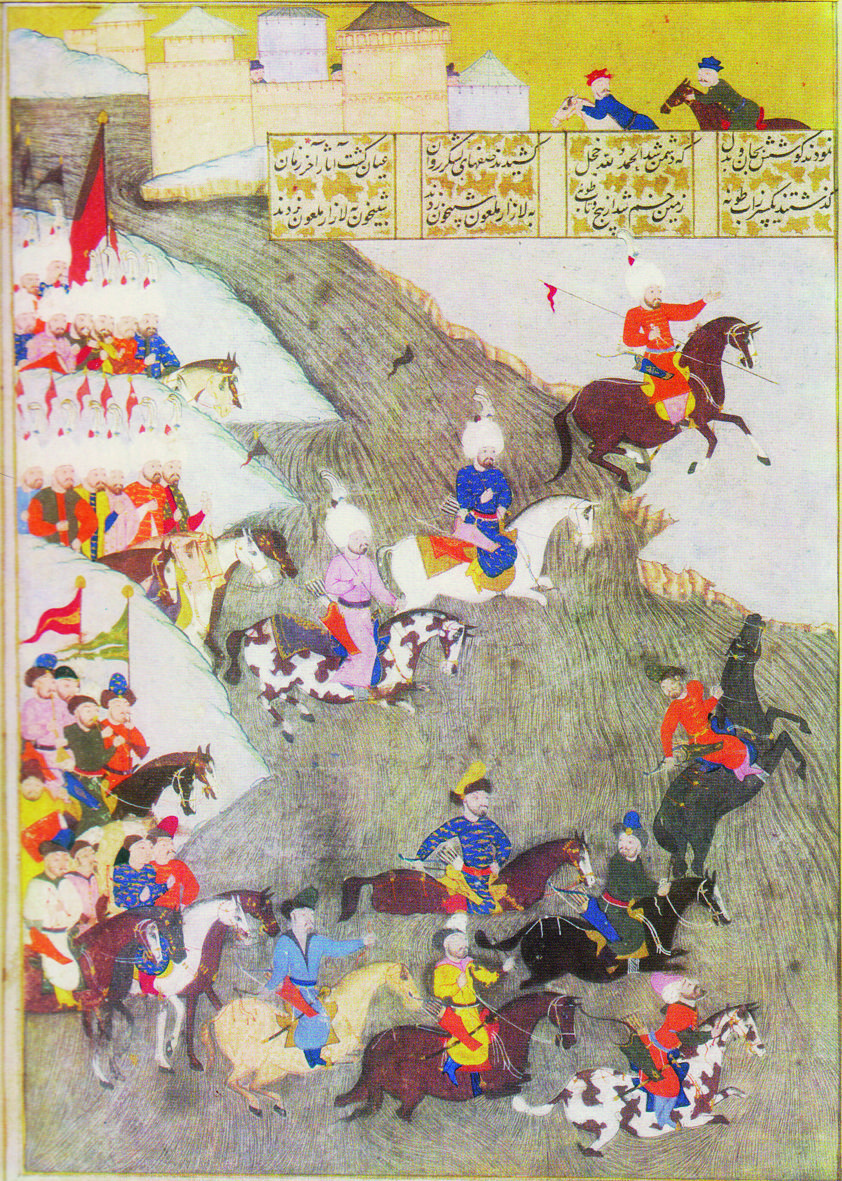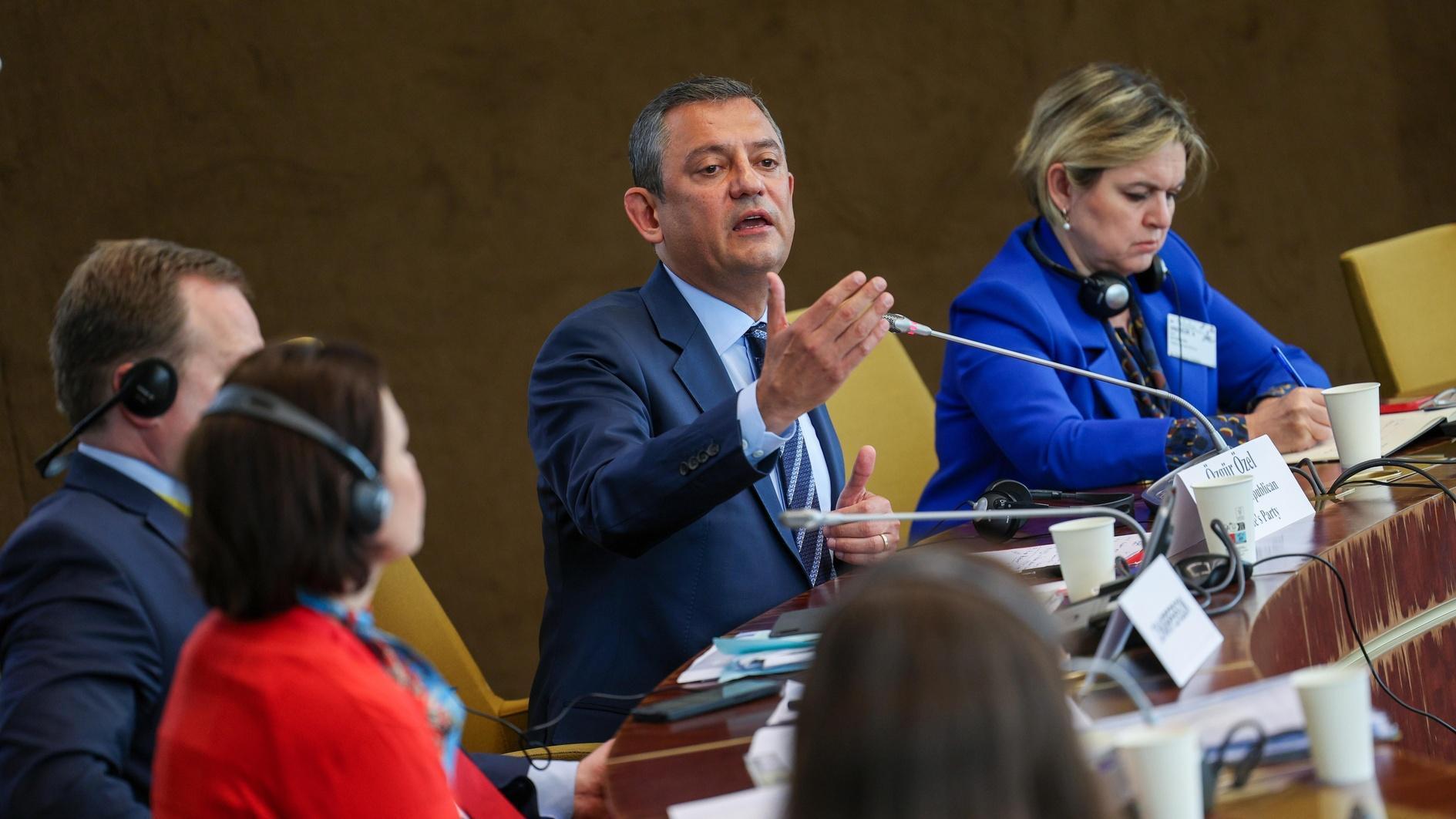The Crimean Tatars and the Ottomans
Niki GAMM

Crimean Tatar refugees. By Carlo Bossoli
Crimea has occupied the headlines for weeks now and while Russia has proclaimed it to be a part of Russia, few realize that it was closely connected with the Ottoman Empire from the 15th to the 18th century.The Crimean peninsula has been occupied by humans ever since prehistoric times with abundant archaeological evidence to back this up. The Crimea was occupied by Scythians, Greeks, Romans and Byzantines until the Mongol invasion in the mid-13th century. The Genoese then took over the settlements that Venice had set up on the peninsula as part of its trade in the Black Sea.
The Mongol invasion brought the Tatars to the Crimea. Their rulers claimed they were descendants of Genghis Khan. By the mid-13th century they had set up a khanate that included the Crimean peninsula and in the 15th century named Giray Khan their ruler. After a struggle against rivals, he succeeded in taking the throne in 1449.
After Giray’s death in 1466, his sons fought over which of them should succeed their father and this allowed the Ottomans to consider taking over the whole of the Crimean peninsula. Eventually, Mengili Giray took the throne through Ottoman intervention but only after he swore allegiance to the Ottomans. Still this did not stop him from cooperating with Muscovy after the Ottomans attacked the south coast of the Crimea in 1475 and took over the Genoese colonies and the Greek principality of Theodoro. The Ottomans then sought to replace him with his son Erminak, who was only too happy to swear allegiance to the Ottomans and assist them in capturing the remaining Genoese colonies. As there were a number of Crimean notables in the Ottoman service, these were able to persuade Fatih Sultan Mehmed II that Mengili was the better person to lead the Tatars against enemies to the north.
Mengili agreed to henceforth supply military and financial assistance to the Ottomans as needed.

“Thus Ottoman control of the Crimean Tatars was established. It was to continue for three centuries, providing the sultans with not only another base to control the Black Sea but also a regular supply of fighting men. The power of the Crimean hans (sic) was not extensive, hardly extending beyond the Crimea itself, but with Ottoman help they were at least able to avoid being absorbed by Muscovy… They remained the principal Ottoman buffers to keep the Russians away from the Black Sea for another two centuries.” (Stanford Shaw, “History of the Ottoman Empire and Modern Turkey”)
The Crimean Tatars were able to mint coins in their own names and had prayers read at Friday services in their name, both of which were considered signs of independence. However, from 1524 onwards, the Ottoman sultan enjoyed veto power over the selection of new khans although, until the end of the 16th century, the area was a separate administrative entity with its own officials, jurisdictions and territorial integrity. Although the Crimean Tatars may at first have agreed to offer financial assistance to the Ottomans, the case in reality was the opposite; the Ottomans needed them to supply scouts and cavalry for their frequent military forays into the Balkan countries and battles with the Poles, Hungarians and Austrians for supremacy there.
In terms of trade, the Crimea provided Istanbul with slaves, grain, salt, lumber, fish and meat. The slave trade was particularly lucrative, especially in women because Ukrainian and Russian women were highly prized in Istanbul for their beauty. The historian Alan Fisher has estimated that as many as a million members of the Polish-Lithuanian Commonwealth were carried off into slavery between 1474 and 1694.
Süleyman's mother
The closeness of the Crimean Tatar leaders to the Ottoman dynasty may have been sealed by the marriage of Ayşe Hafsa Sultan to Sultan Selim I and the birth of their son, who became Kanuni Sultan Süleyman I (Süleyman the Magnificent). She was thought to be the daughter of Mengili I Giray, although there’s no proof of this. Be that as it may, from the time that Süleyman took the throne in 1520 until her death in 1534, she was the Valide Sultan and the first of many influential ones at that. Whether it was because of this or for other reasons, it was acknowledged that if there was no longer a male heir to inherit the Ottoman throne, the khan of the Crimean Tatars was to succeed the last Ottoman.
 At the height of its power in the mid-16th century, the Crimean khanate was able to successfully attack Muscovy and her allies and even burn Moscow in 1571 as part of its efforts to extend its area into the Caspian-Volga region. The following year, however, the Crimean Tatars were decisively defeated at Molodi, some 40 miles south of Moscow. Only 20,000 out of the 120,000-strong Tatar army lived to return to the Crimea. This was the last time the Ottomans and the Tatars attempted to invade north of the Black Sea.
At the height of its power in the mid-16th century, the Crimean khanate was able to successfully attack Muscovy and her allies and even burn Moscow in 1571 as part of its efforts to extend its area into the Caspian-Volga region. The following year, however, the Crimean Tatars were decisively defeated at Molodi, some 40 miles south of Moscow. Only 20,000 out of the 120,000-strong Tatar army lived to return to the Crimea. This was the last time the Ottomans and the Tatars attempted to invade north of the Black Sea.The Cossacks took advantage of the weakness of the Crimean Tatars in the early seventeenth century and raided pretty much at will throughout the peninsula. The seventeenth century Ottoman travel writer, Evliya Çelebi, mentions the destruction of Crimean cities and the trade routes that had brought the area great prosperity. At the time he thought the only place that was secure was the Ottoman fortress at Arabat.
Although the Crimean Tatars continued to participate in Ottoman military campaigns, the decline among the Ottomans meant they would return home more often than not without booty to offset their costs. In addition the financially strapped Ottomans were less and less able to pay for their services. At the same time the Europeans and the Russians were equipping their armies with more modern, better weaponry. Warfare continued throughout the 18th century until finally with the Treaty of Küçük Kaynarca in 1774, the Crimea became independent of the Ottoman Empire and from then on had to side with Russia. Oddly enough the Ottoman sultan as caliph was granted the right to remain as the religious leader of the Crimean Tatars. The peninsula was finally annexed to Russia in 1783.
















